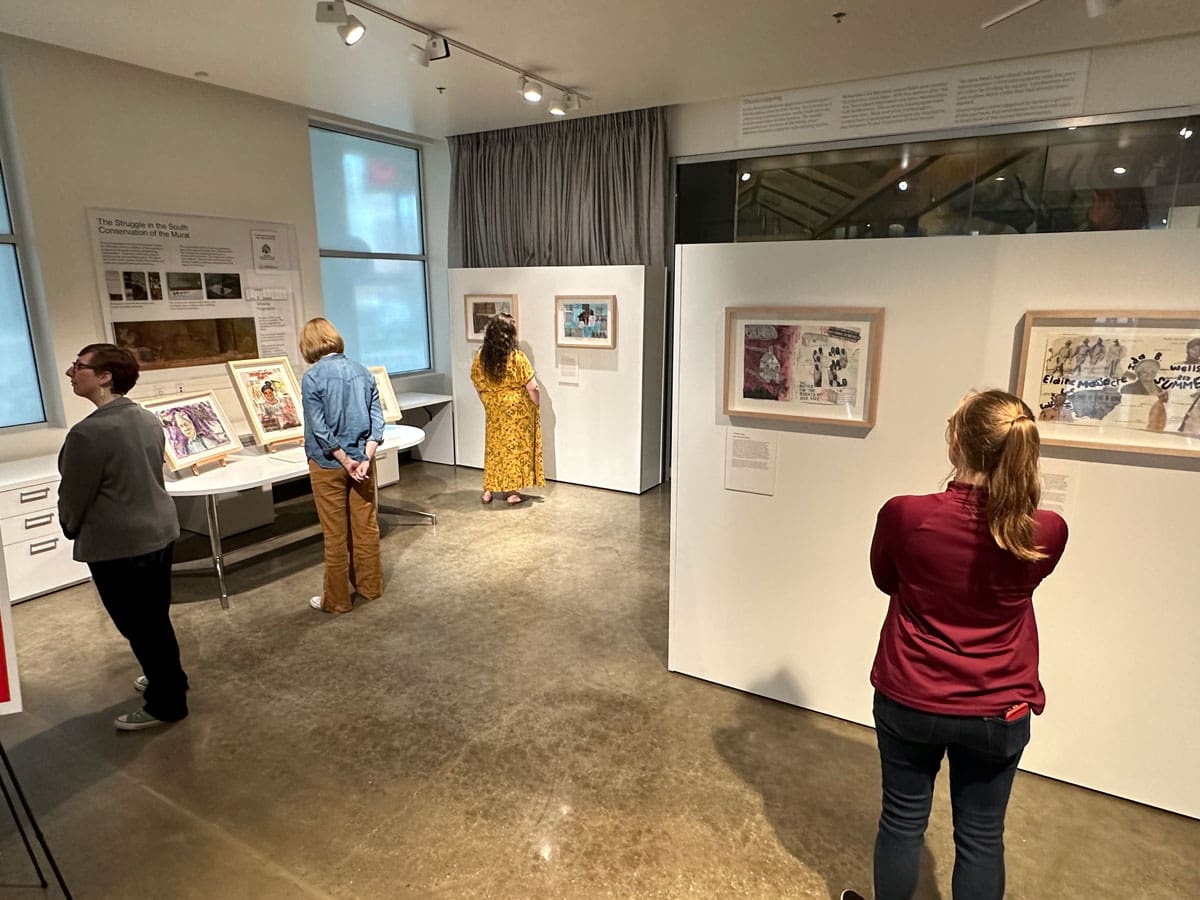Experts Reflect on Art and Activism to Commemorate Opening of New Art Exhibit at UA Little Rock Downtown

UA Little Rock Downtown hosted a panel discussion on art, history, and activism on Nov. 7 to commemorate the opening of a new exhibit, “Their Voices,” on display at UA Little Rock Downtown through Dec. 7.
The panel, “Cultivating Civic Engagement Through Art: How Art Can Help Us Reflect on the Past and Engage in the Present,” brought together artists, educators, and historians.
The panelists included Rex DeLoney, artist and educator at Little Rock Central High School; Jose Hernandez, artist with the X3Mex art collective and the Dedicated Visual Art Studio & Gallery in North Little Rock; Dr. James Ross, historian and professor at UA Little Rock; and Jessica Taverna, art educator at Little Rock Central High School. Dr. Marta Cieslak, director of UA Little Rock Downtown and historian, moderated the discussion.
The leading theme of the panel was representation and inclusion. The panelists agreed that fostering civic engagement through art and history starts with young people seeing themselves in social studies and art classrooms and textbooks. They also noted the critical role of educators in creating spaces, where all students feel respected and heard.
“Creating cultural awareness in the classroom is the most important thing we can do,” Taverna said.
During the 2021-22 school year, Taverna and her students in the Drawing 1 class explored the 1919 Elaine Massacre through historical documents. The students reflected on that experience by creating art. The exhibit, “Their Voices,” in which the young artists examine how art can help tell the story of the difficult past, is an outcome of that project.
Young artists featured in “Their Voices” include Blakely Campbell, Elena Coleman, Lindsay Collins, Brieanna Conley-Smith, Steven Davis, Emma Ebenezer, Gracie Foster, Ahona Ghosh, Hayden Glover, Hallie Johnson, Rachel Laster, Ashley Lopez, Daijon McDaniel, William Onyango, Zachary Onyango, Bhavi Patel, Janae Porter, Asher Simmons, Jack Tackett, Johanna Weinheimer, and Noah Whitlow.
When asked why they have chosen to create art that explores history and engage with communities, DeLoney said, “You want your art to spark a change.”
He noted that as a child he never saw artists or art that represented people like him and the people around him. Today, as a Black artist whose art has been displayed in private and public art collections across the US and as an educator, he wants to give his students the courage to understand what matters to them and to express themselves through art.
“There is a responsibility and accountability with art,” Hernandez agreed. “Create something that matters and gives back to the community.”
Hernandez, who moved from Mexico to Arkansas as a young child in the 1990s, remembered that he never heard of Mexican artists at school. He had to go back to his grandmother’s house in Mexico to see books with the art of great Mexican muralists, like Diego Rivera and José Clemente Orozco. That inspired him to become a muralist too. Hernandez spearheaded the 7th Street Mural Project in Little Rock. Various artists, some of whom attended the panel, have created a series of murals along 7th Street. The murals display scenes relevant to the past and present of Little Rock communities.
Ross stressed the importance of connections between history and art. He noted that both history and art have the same ability to create space, where we can explore our own experiences and learn about the experiences of those who are different from us. He observed that not only in the classroom but throughout our lives history and art teach us about “being human” and how to “engage truth.”
The message resonated with the audience. One audience member shared that art fostered their interest in history, including the history of Little Rock communities, at a time when they found some history books too challenging to read.
When asked what advice the panelists could give to those who wanted to engage with the communities around them, they agreed that everyone, regardless of their skills, could foster a positive change. The panelists remarked that civic engagement means different causes and actions. They stressed the importance of doing what we can.
“You don’t have to do something radical all the time,” Hernandez said. “Being yourself is radical.”
Those interested in seeing the “Their Voices” exhibition may email [email protected] for viewing hours.
